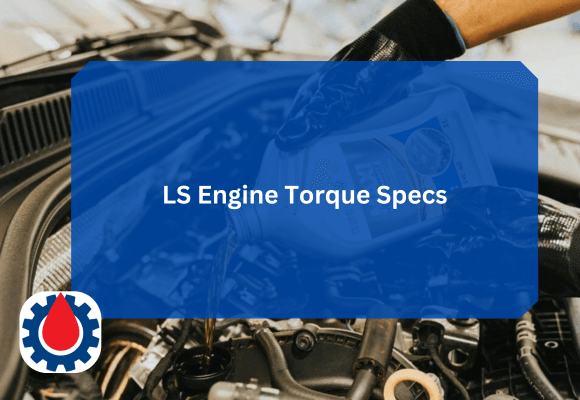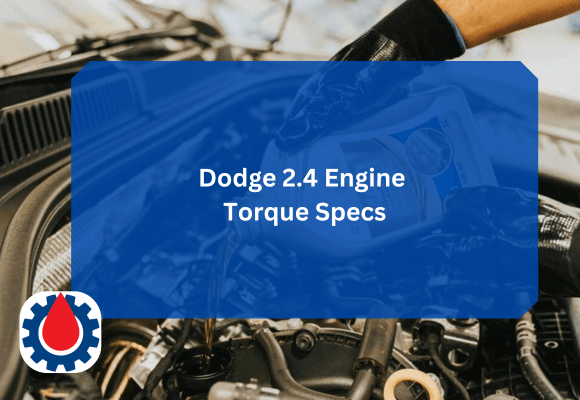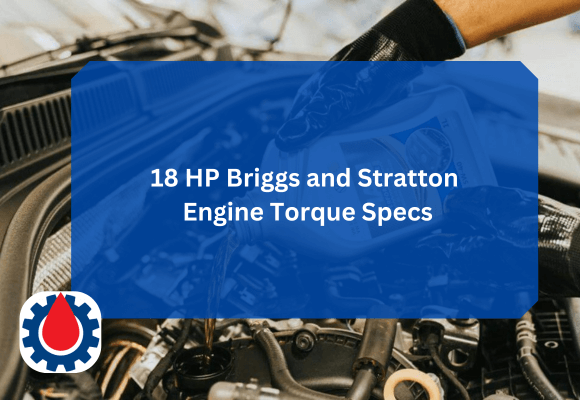Using the correct engine mount torque specifications is essential for safety, longevity, and preventing future mechanical issues. Understanding how engine mount torque works can save you time, money, and headaches down the road.
Below is a comprehensive guide explaining what engine mount torque is, why it matters, common torque values, and best practices for tightening engine mounts correctly.
Engine Mount Torque
| Mount Type | Common Fasteners | Typical Torque Range (ft-lb) | Typical Torque Range (Nm) |
|---|---|---|---|
| Upper engine mount bolts | M8×1.25 or M10×1.5 bolts (×3–4) | 35–60 | 47–81 |
| Lower engine mount bolts | M10×1.5 or M12×1.75 bolts (×3–4) | 50–75 | 68–102 |
| Front engine mount bolts | M10×1.5 bolts (×3–4) | 35–55 | 47–75 |
| Side engine mount bolts | M10×1.5 or M12×1.75 bolts (×3–4) | 45–70 | 61–95 |
| Rear engine (dogbone/pendulum) small bolts | M8×1.25 or M10×1.5 bolts (×2–4) | 40–70 | 54–95 |
| Rear engine (dogbone/pendulum) center bolt | M12×1.75 or M14×2.0 bolt/nut | 75–110 | 102–149 |
| Lower torque mount-to-frame bolts | M12×1.75 bolts (×3–4) + large through-bolt | 55–90 | 75–122 |
| Upper torque strut / roll restrictor bolts | M10×1.5 or M12×1.75 bolts (×2 each end) | 45–85 | 61–115 |
| Transmission mount bolts | M8×1.25 or M10×1.5 bolts (×3–4) | 25–45 | 34–61 |
| Rear transmission mount bolts | M10×1.5 or M12×1.75 bolts (×3) | 30–50 | 41–68 |
| Hydraulic / active engine mount bolts | M10×1.5 bolts + smaller M8 retainers | 30–55 | 41–75 |
| Engine-to-bracket bolts | M10×1.5 or M12×1.75 bolts (×3–5) | 30–45 | 41–61 |
| Bracket-to-engine block bolts | M10×1.5 or M12×1.75 bolts, sometimes TTY | 40–65 | 54–88 |
| Engine support bracket bolts | M10 or M12 bolts (×4–6) | 45–75 | 61–102 |
| Large through-bolts (mount-to-body) | M12×1.75 or M14×2.0 nut/bolt | 70–110 | 95–149 |
| Subframe-to-mount bolts | M12×1.75 or M14×2.0 bolts (×4–6) | 70–120 | 95–163 |
| Crossmember / trans crossmember bolts | M12×1.75 or M14×2.0 bolts (×6–8) | 60–130 | 81–176 |
| Engine cradle / subframe cradle bolts | M14×2.0 or M16×2.0 bolts, often with large washers | 90–140 | 122–190 |
| Engine mount stud nuts | M10 or M12 flanged nuts | 25–35 | 34–47 |
| Passenger-side mount through-bolt | M14×2.0 or M16×2.0 nut | 65–100 | 88–136 |
| Driver-side mount through-bolt | M14×2.0 or M16×2.0 nut | 65–100 | 88–136 |
| Torque rod / damper bolts | M10 or M12 bolts (×2 each end) | 45–80 | 61–108 |
| Heavy-duty truck engine mount bolts | M16×2.0 to M20×2.5 bolts | 120–180 | 163–244 |
| Diesel / high-torque engine mount bolts | M14×2.0 to M18×2.5 bolts + larger through-bolts | 90–150 | 122–203 |
Related Oil Drain Plug Torque Chart(For ALL Car Models)
Best Engine Mount Fastener Kits
Click the Links Below to Check the Latest Prices on AMAZON
1. OMB Warehouse Universal Small Engine Mounting Bolt Kit
- Universal fit for most small engines (lawn mowers, generators, go-karts, etc.)
- Complete set of bolts and studs in common sizes
- Zinc-plated for corrosion resistance
- Easy bolt-on installation, no modifications needed
- Eligible for free Prime delivery
2. Dorman 81101 Motor Mount Bolt Kit – Grade 8
- Grade 8 hardware (stronger than OEM in many cases)
- Direct replacement for select Chevrolet/GMC trucks and SUVs
- Exact fit and thread pitch as factory bolts
- Black oxide finish resists rust
- Includes all required bolts and nuts for both sides
3. Go Kart Engine Mount Bolt Kit for Predator Engines
- Heavy-duty, strong bolts with locking nuts
- Perfect length and strength for Predator 212, 420cc, and similar 3-7 HP engines
- Works on go-karts, mini bikes, log splitters, and small engine swaps
- Users report “better than most” quality and no stripping
- Includes exact quantity needed for full mount
4. MyParts Automotive Engine Mount Replacement Bolt Set (2-Pack)
- Precision-machined steel/aluminum construction
- Exact OE dimensions and thread pitch
- Direct fit replacement for steel and aluminum frame vehicles
- Manufactured with modern CAD tooling for a perfect fit
- Sold as a convenient 2-bolt pack (one per side)
5. Engine Mounting Bolt Kit for VW Aircooled Engines
- Complete kit for all classic VW air-cooled engines (Beetle, Bus, Ghia, Dune Buggy)
- Includes case-to-transmission bolts, nuts, and half-moon starter bolt
- Replaces OEM part numbers N104707, N110102, 111 199 101
- High-strength zinc-plated steel
- Fits 1971-on engines with doghouse oil cooler (and earlier with adapters)
Signs Your Engine Mounts May Be Incorrectly Torqued
• Vibrations at Idle
If the steering wheel or seats shake excessively while idling, a loose mount could be the cause.
• Clunking or Thumping When Accelerating
A mount that isn’t tightened enough can shift when the engine twists under load.
• Engine Leaning or Sitting Uneven
Over-torqued bolts can distort a bracket, causing alignment issues.
• Visible Gap or Misalignment
A small shift in engine position can show a gap where the mount should sit flush.
• Premature Mount Wear
Incorrect torque accelerates the failure of rubber or hydraulic mount components.
Related 8.3 Cummins Engine Torque Specs(For All Components)
How to Torque Engine Mounts Correctly
Proper torqueing is more than just tightening bolts with a wrench. Follow these steps to ensure accuracy and avoid mistakes.
1. Use a Quality Torque Wrench
A reliable torque wrench, preferably recently calibrated, is mandatory. Avoid guessing or using non-torque tools.
2. Support the Engine Properly
Before removing or installing mounts, support the engine using:
- Engine support bar
- Floor jack with a wood block
- Transmission jack (for some vehicles)
Never rely on mounts alone to hold engine weight during installation.
3. Torque in the Correct Sequence
Most mounts require bolts to be tightened in a specific order:
- Loosely install bolts
- Align the mount and bracket
- Tighten to half torque
- Finish with full torque
This prevents stress, misalignment, or binding.
Related 5.3 LS Engine Torque Specs(For All Components)
4. Torque with the Engine at Proper Height
Ensure the engine is positioned correctly before final tightening. If the engine is raised too high or low when torquing, the mount may twist.
5. Use New Bolts if Required
Some modern vehicles use torque-to-yield (TTY) bolts, which stretch when tightened and must not be reused. Always check manufacturer guidelines.
6. Recheck Torque After Installation
Once all mounts are installed, re-verify the torque on each bolt. Slight shifts can occur as the engine settles.
Common Mistakes People Make When Torquing Engine Mounts
• Over-torquing
More torque does not mean better. Over-tightening can crush mount bushings or crack brackets.
• Torquing While the Engine Is Misaligned
If the engine isn’t level, tightening bolts can lock it into the wrong position.
• Using Dirty or Damaged Threads
Dirty threads can create false torque readings. Clean threads ensure accuracy.
• Reusing Stretch Bolts
TTY bolts lose clamping force once stretched and can fail unexpectedly.
• Not Checking the Service Manual
Even within the same brand, torque specs vary between models and engine types.
Related Perkins Engine Torque Chart(For All Models/Series)
How Often Should You Check Engine Mount Torque?
Engine mounts generally remain tight once properly torqued. However, it’s smart to check them:
- After a mount replacement (after 500–1,000 miles)
- When diagnosing vibration issues
- After engine or transmission removal
- On high-mileage cars during major service intervals
For performance vehicles or off-road applications, more frequent checks are recommended.
Factors That Affect Engine Mount Torque Specs
1. Engine Size & Power Output
Higher horsepower engines require more clamping force.
2. Bolt Grade
Grade 8.8, 10.9, or 12.9 bolts each have different torque requirements.
3. Mount Material
Rubber, hydraulic, and polyurethane mounts handle torque differently.
4. Vehicle Type
Trucks, SUVs, and diesel engines typically use stronger mounts with higher torque values.
FAQs
What torque for engine mounts?
Engine mount torque varies by vehicle, but most engine mounts tighten between 35–120 ft-lb, depending on location, bolt size, and engine type. Smaller cars use lower torque, while trucks, SUVs, and diesel engines use higher values. Always check your exact vehicle’s service manual for the correct specification.
Do I need a torque wrench for motor mounts?
Yes, a torque wrench is strongly recommended. Motor mounts must be tightened to precise specifications to avoid vibration, misalignment, or bolt failure. Hand-tightening or guessing can lead to mount damage or unsafe engine movement.
How to tell if an engine torque mount is bad?
A failing torque mount shows signs like excessive vibration, clunking when shifting or accelerating, engine movement, shaking at idle, or visible tears in the mount rubber. You may also feel jerky acceleration or hear metallic hits when the engine rocks during load changes.
What is the proper torque for scope mounts?
Scope mount torque isn’t related to engines, but generally:
- Scope ring screws: 15–25 in-lb
- Base screws: 25–35 in-lb
- Always follow the optic or mount manufacturer’s specific torque ratings.
What is the engine torque mount?
An engine torque mount (also called a torque strut mount or dogbone mount) is a support designed to limit rotational engine movement during acceleration, shifting, and braking. It stabilizes engine twist, reduces vibration, and protects other mounts from excessive stress.
What is the 20% rule for torque wrenches?
The 20% rule states that a torque wrench is most accurate between 20% and 80% of its total range. Torque wrenches should not be used at their extreme low or high ends (0–20% or 80–100%) because readings become less reliable.
Final Thoughts
Engine mount torque is often overlooked but critically important for vehicle safety, comfort, and long-term reliability. Properly torquing engine mounts helps reduce vibration, prevent drivetrain misalignment, and protect critical components.
While the general torque ranges above offer a helpful starting point, always refer to your vehicle’s factory service manual for exact specifications. Taking the time to torque mounts correctly not only ensures a smooth ride but also prevents costly repairs down the line.




